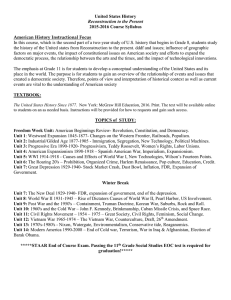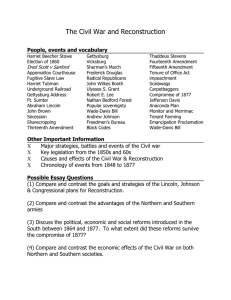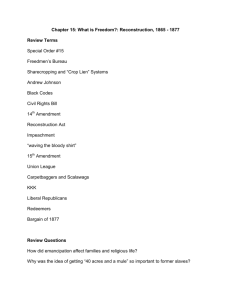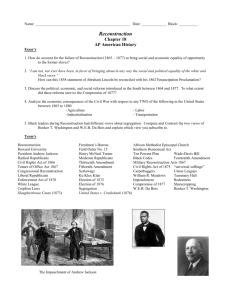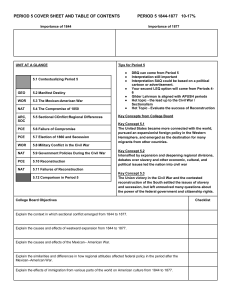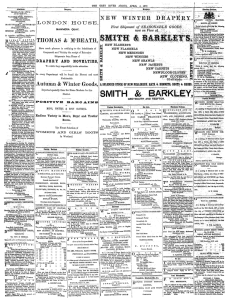United States History 2015-2016 Course Syllabus American History Instructional Focus
advertisement
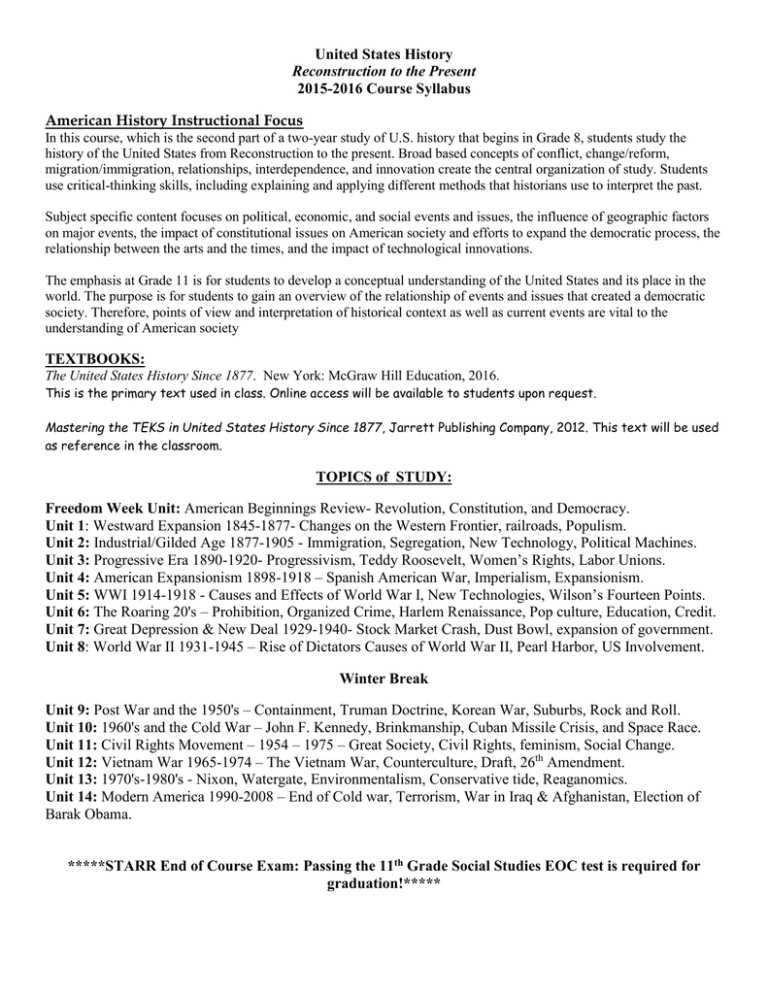
United States History Reconstruction to the Present 2015-2016 Course Syllabus American History Instructional Focus In this course, which is the second part of a two-year study of U.S. history that begins in Grade 8, students study the history of the United States from Reconstruction to the present. Broad based concepts of conflict, change/reform, migration/immigration, relationships, interdependence, and innovation create the central organization of study. Students use critical-thinking skills, including explaining and applying different methods that historians use to interpret the past. Subject specific content focuses on political, economic, and social events and issues, the influence of geographic factors on major events, the impact of constitutional issues on American society and efforts to expand the democratic process, the relationship between the arts and the times, and the impact of technological innovations. The emphasis at Grade 11 is for students to develop a conceptual understanding of the United States and its place in the world. The purpose is for students to gain an overview of the relationship of events and issues that created a democratic society. Therefore, points of view and interpretation of historical context as well as current events are vital to the understanding of American society TEXTBOOKS: The United States History Since 1877. New York: McGraw Hill Education, 2016. This is the primary text used in class. Online access will be available to students upon request. Mastering the TEKS in United States History Since 1877, Jarrett Publishing Company, 2012. This text will be used as reference in the classroom. TOPICS of STUDY: Freedom Week Unit: American Beginnings Review- Revolution, Constitution, and Democracy. Unit 1: Westward Expansion 1845-1877- Changes on the Western Frontier, railroads, Populism. Unit 2: Industrial/Gilded Age 1877-1905 - Immigration, Segregation, New Technology, Political Machines. Unit 3: Progressive Era 1890-1920- Progressivism, Teddy Roosevelt, Women’s Rights, Labor Unions. Unit 4: American Expansionism 1898-1918 – Spanish American War, Imperialism, Expansionism. Unit 5: WWI 1914-1918 - Causes and Effects of World War I, New Technologies, Wilson’s Fourteen Points. Unit 6: The Roaring 20's – Prohibition, Organized Crime, Harlem Renaissance, Pop culture, Education, Credit. Unit 7: Great Depression & New Deal 1929-1940- Stock Market Crash, Dust Bowl, expansion of government. Unit 8: World War II 1931-1945 – Rise of Dictators Causes of World War II, Pearl Harbor, US Involvement. Winter Break Unit 9: Post War and the 1950's – Containment, Truman Doctrine, Korean War, Suburbs, Rock and Roll. Unit 10: 1960's and the Cold War – John F. Kennedy, Brinkmanship, Cuban Missile Crisis, and Space Race. Unit 11: Civil Rights Movement – 1954 – 1975 – Great Society, Civil Rights, feminism, Social Change. Unit 12: Vietnam War 1965-1974 – The Vietnam War, Counterculture, Draft, 26th Amendment. Unit 13: 1970's-1980's - Nixon, Watergate, Environmentalism, Conservative tide, Reaganomics. Unit 14: Modern America 1990-2008 – End of Cold war, Terrorism, War in Iraq & Afghanistan, Election of Barak Obama. *****STARR End of Course Exam: Passing the 11th Grade Social Studies EOC test is required for graduation!*****
